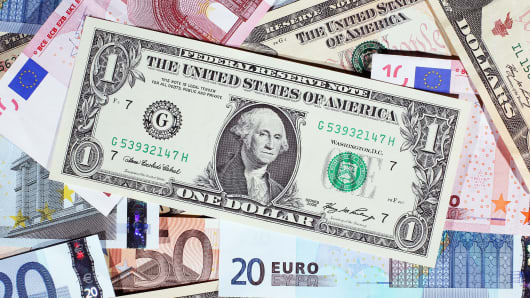With money-printing presses working overtime in the U.S. and in the euro area, one would expect the currencies of major developing economies in East Asia to be much stronger against the dollar and the euro than has been the case throughout the ongoing financial crisis.
But the opposite has happened. Over the past 12 months, for example, only the Thai baht rose 6 percent against the dollar. Other currencies, like the Chinese yuan, Singapore dollar and Malaysian ringgit recorded relatively minor gains between 0.6 percent and 1.6 percent, while the Korean won, Indian rupee and the Indonesian rupiah fell between 1 percent and 8 percent with respect to the U.S. currency.
The reason for this apparently puzzling weakness is very simple: All these countries use an active exchange rate management to protect and enhance their export-driven growth strategies.
What are these exchange rate management policies?
They consist of the key instruments of monetary policy and its extensions in the form of currency market interventions and controls of capital flows.
(Read More: Will AsianCurrencies Forever Disappoint?)
To avoid confusions sometimes encountered in European discussions, it should be noted that there are no exchange rate policies and monetary policies as separate tools of economic management. There is only monetary policy, because exchange rates are relative prices (so many units of currency X per unit of currency Y) resulting from demand-supply relationships of a given currency.
Loose Money Policies
With this important clarification out of the way, it is obvious that expansionary monetary policies are the key source of weakness for currencies in major developing East Asian economies.That is clearly shown by very low - and even negative - real short-term interest rates, ranging from 1.4 percent in South Korea to -4.3 percent in Singapore.
No wonder, then, that none of these countries' currencies, with the exception of the Thai baht, showed any strength against the two wobbly international reserve currencies.
And to make sure their currencies stayed low to support export sales, these countries even kept propping up the dollar by buying $150 billion of U.S. Treasury debt over the past 12 months. These are, in fact, currency market interventions.
(Read More: Largest Deficit Nation Still Delights Investors )
Predictably, China was by far the largest U.S. creditor, adding nearly $100 billion of American debt instruments to its foreign currency reserves. But before anyone springs for the conclusion that China is a captive buyer of Washington's IOUs, one should note that these purchases were less than half of what China added to its reserves over the past 12 months.
And here is an interesting question:What else did China buy at a time when most of the world was dumping euro assets?
But if China was spending only a fraction of its reserves increase to buy U.S. Treasury securities, some other Asian countries were spending much more than their net additions to foreign currency holdings to prop up the dollar and manage virtual dollar pegs. Capital controls are also used to resist upward pressures on their currencies.
One can understand these countries'desire to take maximum advantage of the good things created by the large dollar and euro liquidity: by operating expansionary monetary policies, the U.S. and the euro area (nearly 40 percent of the world economy) are supporting demand for Asian exports. That is the positive income effect on what Asia has to sell.
The less positive part is equally clear: the excess supply of dollar and euro assets is putting upward pressure on Asian currencies. That raises the price of exports – often the key component of aggregate demand - and makes them less competitive on world markets.



